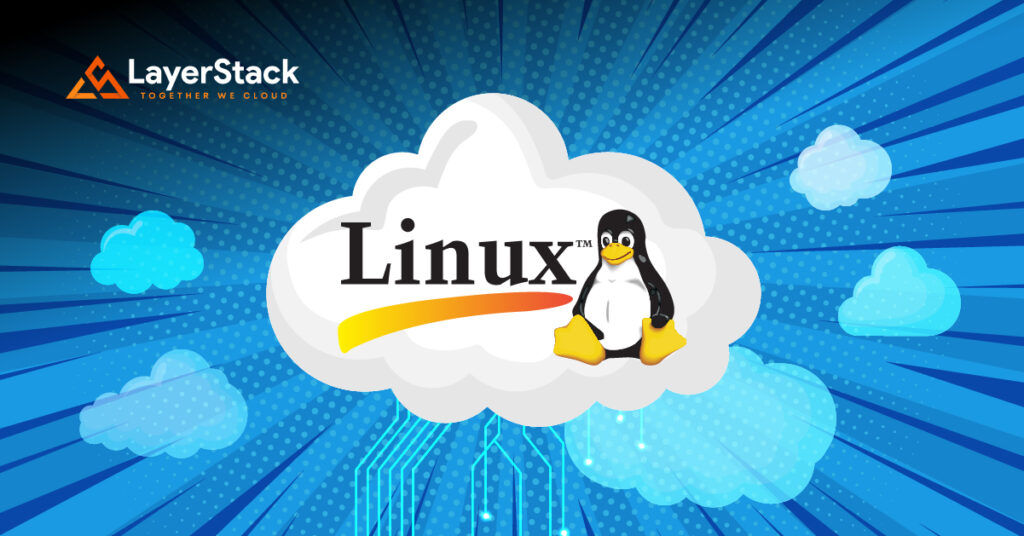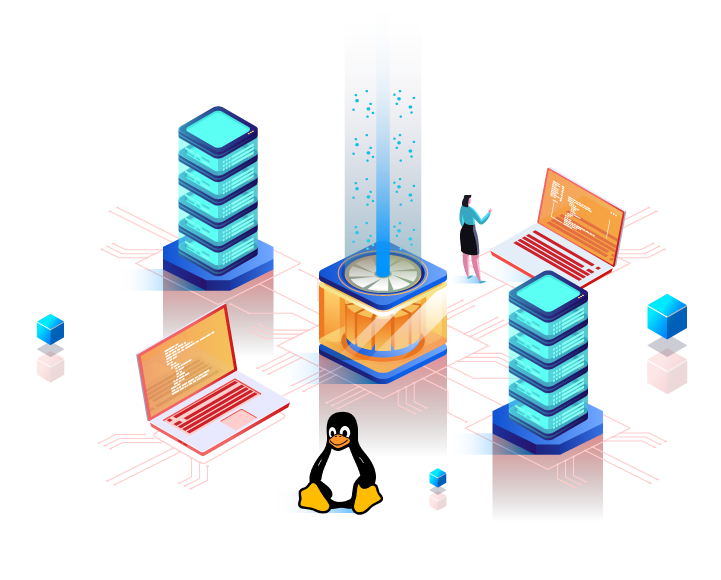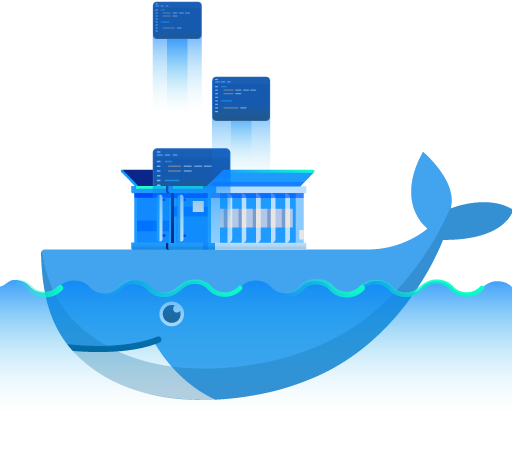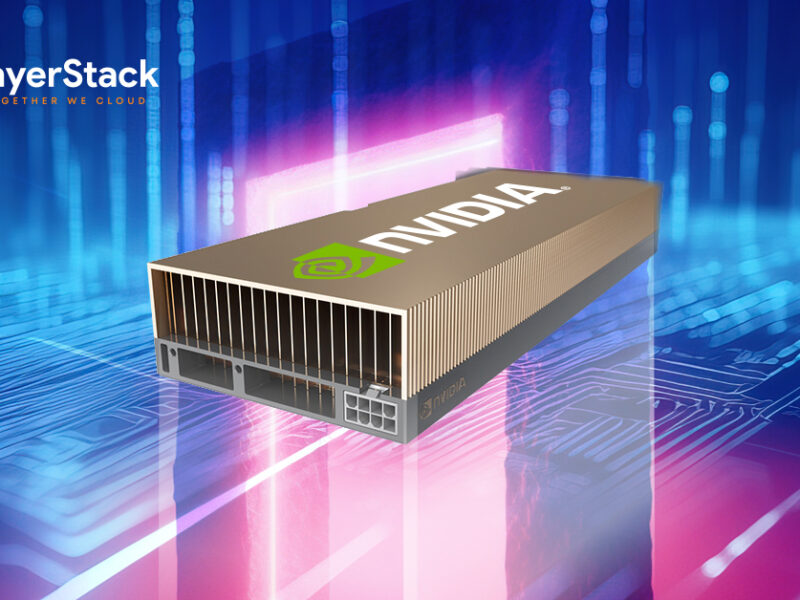
Linux is like the strong foundation of a building, supporting the towering skyscrapers of modern technology. It’s the engine behind the scenes, making sure everything stays safe, adaptable, and lightning-fast.
We’re going to explore what makes Linux the superhero of cloud computing. We’ll break it down to the basics—how it keeps our data safe, how it can be tailored to our unique needs, and how it runs so fast and efficiently. And, of course, we’ll guide you through the tools and tips to make it work for you.
Security First: Strengthening Cloud Infrastructure with Linux
1. Open Source Vigilance: Linux’s open-source nature ensures continuous scrutiny by a global developer community, identifying vulnerabilities swiftly and enhancing the security of Linux servers in the cloud.
The open-source characteristic of Linux allows a vast community of developers to constantly inspect the code. This results in the identification and rapid resolution of any security vulnerabilities. For instance, the Heartbleed bug, a serious security vulnerability in the widely used OpenSSL cryptography library, was quickly identified and patched within the Linux community.
2. Fortified User Permissions: Linux provides meticulous control over user permissions, enabling administrators to define precise access levels. This precise control minimizes unauthorized access risks, a crucial aspect of cloud security.
In Linux, users and processes can have specific permissions and access rights, restricting or allowing their actions. For example, the ‘root’ user has super user privileges, while other users can only access and modify their designated files and directories.
3. Timely Security Updates: Regular security patches and updates from Linux distributions bolster server defenses, ensuring rapid mitigation of emerging threats and reducing the risk of breaches and data compromise.
Linux distributions frequently release updates and security patches to address vulnerabilities. These updates can be effortlessly installed using package management systems like apt for Debian-based distributions or yum for Red Hat-based distributions.

Flexibility Unleashed: Tailoring Linux for Your Cloud Endeavors

1. Diverse Distribution Ecosystem: Linux offers a wide spectrum of distributions, each tailored for specific use cases. From lightweight options like Ubuntu and Debian to enterprise-grade choices such as CentOS and Red Hat, Linux provides the perfect fit for every cloud requirement.
Depending on the specific needs of your cloud infrastructure, you can choose a Linux distribution that aligns with those requirements. For example, Ubuntu Server is known for its ease of use, making it a great choice for newcomers to Linux, while CentOS is preferred in enterprise environments for its stability and long-term support.
2. Customization and Scalability: Linux’s open-source foundation allows for extensive customization, empowering users to tailor the system to their specific needs. In the cloud, this flexibility translates to seamless scaling and optimal resource utilization.
Users can modify and customize virtually every aspect of a Linux system, from the kernel to the user interface. This flexibility is vital in the cloud, where workloads can vary greatly. For instance, a cloud server hosting a website might require different configurations compared to a server handling machine learning tasks.
3. Virtualization Harmony: Linux seamlessly integrates with various virtualization platforms like KVM, Xen, and VMware, ensuring efficient deployment and management of virtual machines in the cloud. This compatibility enables a flexible and dynamic infrastructure.
KVM (Kernel-based Virtual Machine) is a popular choice for virtualization in Linux. It allows the creation of multiple virtual machines, each running its own operating system, on a single physical server. This facilitates resource optimization and efficient utilization of hardware.

Performance at Its Peak: Unleashing Linux’s Potential in the Cloud
1. Lean Architecture: Linux’s lightweight architecture guarantees efficient resource usage, even in resource-constrained cloud environments. This leads to faster boot times, swifter response rates, and overall superior performance.
The minimalist design of Linux ensures that it can function optimally even with limited resources. For instance, Linux-based servers can run on lower hardware specifications compared to servers running other operating systems, making it cost-effective in cloud environments.
2. Streamlined Process Management: Linux boasts robust process management capabilities, facilitating effective multitasking and optimal utilization of system resources. This directly translates to heightened performance and responsiveness, critical for a seamless cloud experience.
The Linux kernel efficiently manages processes, allocating resources based on priority. For example, in a cloud server handling numerous requests, the Linux scheduler ensures that critical tasks are executed promptly, optimizing performance and responsiveness.
3. Network Optimization: Linux features a highly optimized networking stack, enhancing network performance within the cloud. It provides efficient data transmission and reception, ensuring rapid communication between servers and applications.
In cloud environments, efficient networking is paramount. Linux’s networking stack is designed to minimize latency and optimize data transfer, enabling applications to communicate swiftly and reliably across the cloud infrastructure.

Deploying Linux Cloud Servers: Essential Tools and Best Practices
1. Ansible for Automation: Leverage Ansible, a potent automation tool, to streamline the deployment and management of Linux cloud servers. It facilitates configuration management, application deployment, and task automation, simplifying server administration.
Ansible allows for the automation of repetitive tasks, ensuring consistent and efficient server setups. For instance, you can automate the deployment of necessary software, configurations, and security updates across multiple Linux servers in your cloud environment.

2. Docker for Containerization: Utilize Docker, a leading containerization platform, for creating and deploying lightweight, portable applications. Docker enables the efficient isolation and running of applications on Linux servers, optimizing resource usage and enhancing scalability.
Docker containers package applications and their dependencies, ensuring consistency across different environments. This approach allows for seamless deployment, scaling, and management of applications, making it a popular choice in cloud environments.
3. Proactive Monitoring and Logging: Implement robust monitoring and logging tools like Prometheus, Grafana, and the ELK stack. These tools offer real-time monitoring, analysis, and visualization of various server metrics, enabling proactive troubleshooting and system optimization.
Proactive monitoring helps in identifying performance bottlenecks, security threats, and potential issues before they escalate. By monitoring critical metrics such as CPU usage, memory usage, and network traffic, you can ensure optimal performance and security of your Linux cloud servers.

Linux servers have solidified their position as a linchpin in the cloud ecosystem, delivering unmatched security, adaptability, and performance. By capitalizing on its open-source advantage, Linux provides a sturdy foundation for cloud infrastructures, allowing businesses to tailor solutions to their unique requirements.
Armed with the right tools and implementing best practices, organizations can unlock the true potential of Linux in the cloud, ensuring a prosperous and efficient cloud computing journey. The trifecta of security, flexibility, and performance that Linux brings to the cloud realm can revolutionize the way we approach and deploy cloud-based solutions.
Delving Deeper: A Closer Look at Linux and Cloud Synergy
1. High Availability and Load Balancing: Linux excels in facilitating high availability and load balancing in cloud environments. Technologies like Pacemaker and Keepalived ensure that critical services remain available by automatically shifting the load to healthier servers in case of failures.
For example, in a cloud application where downtime is not an option, Linux-based load balancers can distribute incoming traffic evenly across multiple servers, enhancing performance and fault tolerance.
2. Advanced Networking with iptables and Firewalls: Linux provides powerful networking features through tools like iptables, enabling robust firewall configurations. Administrators can define rules to filter and manage network traffic, enhancing security within the cloud.
In cloud deployments, iptables can be employed to restrict access to certain ports or services, fortifying the server’s defenses against unauthorized access and potential cyber threats.
3. Storage Management and Virtualization with LVM: Logical Volume Manager (LVM) in Linux allows for dynamic volume management and easy storage allocation, crucial in cloud environments where storage needs can evolve rapidly.
LVM permits resizing, creating, and concatenating volumes on the fly, optimizing storage utilization across various cloud instances. This enhances storage management efficiency and reduces operational complexities.

Real-World Scenarios: Linux Servers in Action
1. E-commerce Platform: Consider a bustling e-commerce platform during a flash sale event. Linux-based cloud servers ensure smooth transaction processing, secure payment gateways, and a seamless shopping experience for customers.

The flexibility of Linux allows for quick scaling to accommodate the surge in traffic, while stringent security measures guarantee data protection and customer trust throughout the event.
2. Data Analytics Infrastructure: In a data analytics scenario, Linux servers manage the immense data processing demands efficiently. Whether it’s parsing and analyzing massive datasets or running complex machine learning algorithms, Linux’s superior performance ensures timely insights.
The ability to customize Linux to specific analytics requirements and leverage high-performance computing capabilities makes it an ideal choice for data-centric cloud applications.

Future Horizons: Linux and Cloud Innovations
The future holds promising advancements in the integration of Linux and cloud computing. As cloud technologies evolve, Linux will continue to adapt and optimize its capabilities, aligning with emerging trends like edge computing, serverless architectures, and AI-driven operations.
With ongoing developments and an active community backing, Linux is poised to drive innovation and lead the way in the cloud ecosystem, providing businesses with the tools needed for a robust, efficient, and secure cloud infrastructure.

Embrace the Power of Linux in the Cloud
In the dynamic landscape of cloud computing, Linux stands as an unshakable pillar, offering a myriad of benefits ranging from robust security and unmatched flexibility to superior performance. The fusion of Linux with cloud technologies presents a golden opportunity to create, innovate, and elevate your digital presence.
By embracing Linux and understanding its distinct advantages within the cloud, businesses can embark on a transformative journey, optimizing their operations, enhancing security, and driving growth in the digital age. The time to unlock the full potential of Linux in the cloud is now—seize the opportunity and pave the way for a prosperous cloud-centric future.


